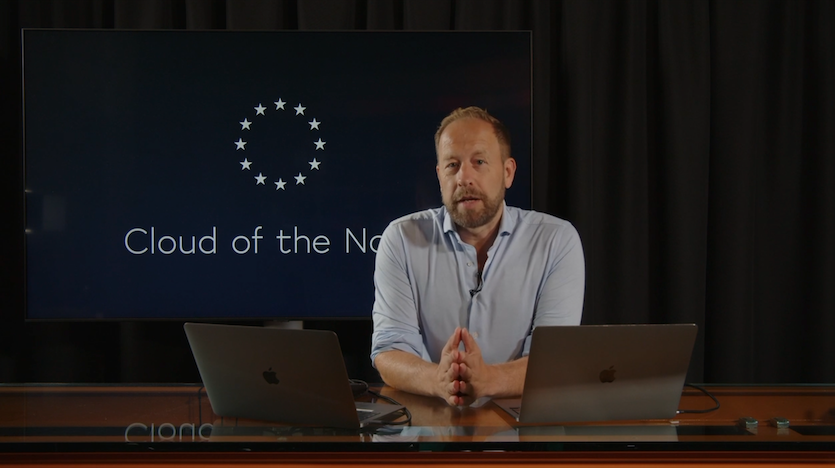How to Effectively Deliver Live Streams and Videos Into China
Last updated: 7 November 2023

In a globalized world, the demand for seamless live and VOD streaming content knows no bounds. Yet, when it comes to streaming into China, the intricacies of technology, regulations, and regional preferences pose unique challenges.
In a compelling discussion, Jet-Stream founder Stef van der Ziel is joined by technical leader Joshua Johnson from EdgeNext and EPEAK Studio founder Timothée Pineau to delve into the journey of streaming into China.
Don’t feel like reading? Listen to the full episode below.
A Global Congress
Tim, from EPEAK Studio, reached out to Jet-Stream last year with an ambitious customer request. The customer was none other than a global entrepreneurial network, known for organizing their annual congress featuring renowned speakers from across the world. The event, featuring a grand stage and studio setup, multi-camera capture, and multilingual live translation, had to be streamed to a global audience, which required the use of global CDN.
Stef: “When we talk about these so called global CDNs, how global are they? I mean, some CDNs are very distributed across the world. But if you talk about countries, such a China, which is a huge industry, a huge potential emerging industry with a huge potential audience, not many of those CDN’s have that specialism.”.
China’s Potential
The world is so much more extensive than just Europe and the USA, and China is a prime example. With a staggering population of over 1.4 billion people, it presents a massive market for video services. From B2C media to B2B education, commercial e-learning, marketing, sales, sports, and gaming, the opportunities in China are boundless.
How to Expand Your Online Presence in China?
1. Understanding the Global Landscape
Timothée: “You know, one of the things you can do to reach a wider audience is to stream to different regions. You can stream to Europe and everywhere else where your event is not happening to reach the audience there. But a big part is also using different CDNs in different places because they are more adaptive and efficient.”.
Streaming to China requires an understanding of the local culture, language, and technology infrastructure. Just as a one-size-fits-all approach doesn’t work for content, it doesn’t work for streaming either.
Timothée: “You can’t also expect people just to want to listen to English all the time. If you want to reach markets like India or China… There are more people there that speak Chinese and there are more people there that speak Hindi…”.
2. Adapting to Local Culture
Stef: “You have to adapt the content to that culture. The way you film it has to be different. Maybe they use different devices like cell phones instead of laptops.”.
China’s primary means of accessing content is through mobile devices. The visual window on their phones is tiny, requiring content creators to adapt their filming techniques to ensure content remains engaging and understandable.
Timothée: “You have to tell your production team to do very close-up shots. Don’t do any wide shots because people won’t be able to see anything distinct there.”.
The cultural and technological aspects go hand in hand. And understanding how your content will be consumed in a particular market is vital for effective streaming.
3. Navigating Cultural Sensitivities
Joshua: “You also have to address what is allowed and what isn’t allowed. What we see as allowed subject matter may not be interpreted the same way in another country.”.
Streaming into China also comes with regulatory challenges. Content that’s acceptable in one region might not align with China’s cultural and political norms.
Stef: “It’s about the values. We can think that our values are morally and ethically advanced. But they can have different opinion about this. So you have to think about this too.”.
4. The Role of Technology
When it comes to technology, you have to be realistic about what’s required. Some events can work perfectly well with 720p and a lower bitrate. It’s not always necessary to stream in high resolution, as that significantly impacts bandwidth and infrastructure requirements.
Stef: “In Covid time we’ve had to educate a lot of people about streaming. And we saw a lot of AV production companies popping up as new streaming experts. And you know, just putting stuff on Vimeo and hoping that people will be able to see that… You have to talk with a specialist about the production that fits the culture and the technology that they have there. And you have to work with a CDN that can deliver traffic there.”.
5. Overcoming the Great Firewall
Stef: “Another thing is, of course, technical challenges. How do we get streams into China? There is a what we call this Great Firewall. I mean, YouTube videos will probably not get into China at all, right?”.
Timothée: “No YouTube, no Vimeo, no Twitter, no nothing…”.
China’s “Great Firewall” presents a formidable challenge to content providers. Many popular Western video streaming platforms, like YouTube, are inaccessible within China. Therefore you will need to look for alternative methods of content delivery”.
Joshua: “Right. Yeah, you know, there’s a thing in China what they call an ICP license, which is Internet content provider license. You need to have that ICP license associated with your domains. And there are ways to obtain it, but you have to have entity in China to do so.”.
Stef: “The best way is, of course, to use CDNs that have capacity within China. So you can have native local capacity and distribution with some guarantees on scale and performance.”.
However, while global CDNs can be a valuable resource, the uncertainty of their accessibility underscores the necessity of a multi-CDN approach. Jet-Stream’s Multi CDN tech stack empowers us to have instant, enforced control over traffic routing, ensuring reliability even in the face of unexpected CDN blockages.
Our strategy involves employing multiple ‘global’ CDNs for major regions like the EU, North America, South America, Asia, and the Pacific. In regions such as Africa, the Middle East, and China, we supplement with specialized CDNs to ensure a comprehensive and reliable delivery network. For instance, when we streamed into China with EPEAK Studio and EdgeNext, this approach proved particularly effective. Click here to read more about this case or listen to the full episode of Jet-Stream Podcast.
Are you considering streaming into emerging markets? Let’s have a chat 🙂




